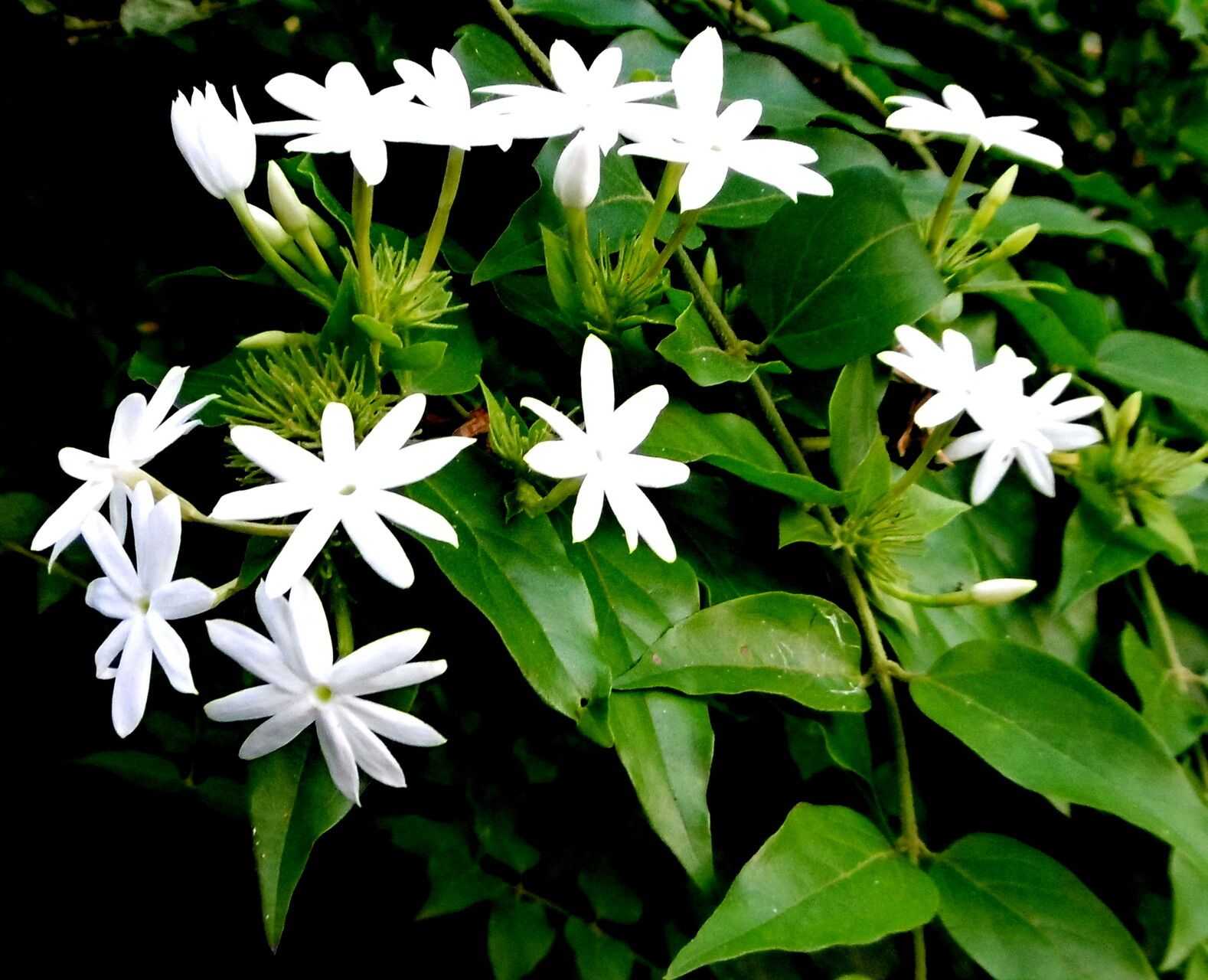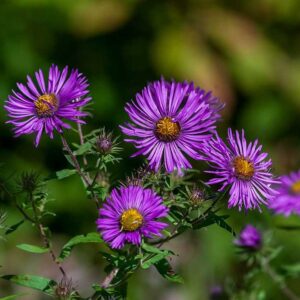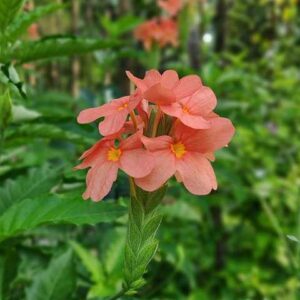Introduction
Are you ready to transform your garden into a fragrant oasis? Look no further than Jasminum Multiflorum plants, the ultimate addition to any green space.
Jasminum multiflorum, commonly known as star jasmine known for their delicate white flowers and intoxicating scent, these plants are sure to captivate your senses and create a serene atmosphere.
You can also enhance the beauty of Jasminum Multiflorum by planting complementary varieties from PlantsJar. Add bursts of color with the vibrant Paper Flower (Bougainvillea) and Yellow Lantana Flower plants, and diversify your garden with the colorful blooms of the Hibiscus Plant.
Click on the headings to read more!
Benefits
Jasminum Multiflorum plants offer numerous benefits that make them a popular choice among gardeners. Firstly, their exquisite white flowers release a mesmerizing fragrance that can uplift your mood and create a calming atmosphere in your garden. The scent is particularly soothing in the evening, making Jasminum Multiflorum plants an ideal addition to outdoor seating areas.
Additionally, these plants are known for attracting pollinators such as bees and butterflies, contributing to a thriving ecosystem in your garden. The presence of pollinators can also enhance the growth and productivity of other nearby plants. Furthermore, Jasminum Multiflorum plants are relatively low-maintenance and can thrive in a variety of climates, making them suitable for gardeners of all experience levels.
Planting and location requirements
To ensure the successful growth of Jasminum Multiflorum plants, it is important to choose the right location and provide suitable soil conditions. These plants thrive in well-draining soil that is rich in organic matter. Before planting, it’s recommended to prepare the soil by adding compost or well-rotted manure to improve its fertility and drainage.
Jasminum Multiflorum plants prefer to be planted in an area that receives full sun or partial shade. In regions with hot climates, providing some afternoon shade can help protect the plants from scorching. It’s important to avoid planting them in areas that are prone to strong winds, as the delicate branches can be easily damaged. Additionally, these plants can be grown in containers, making them a versatile choice for balconies or patio gardens.
When planting Jasminum Multiflorum, dig a hole that is twice as wide and deep as the plant’s root ball. Place the plant in the hole, making sure that the top of the root ball is level with the soil surface. Backfill the hole with soil, gently firming it around the roots to eliminate air pockets. Finally, water the plant thoroughly to settle the soil.
Watering and fertilizing
Proper watering is crucial for the health and growth of Jasminum Multiflorum plants. These plants prefer evenly moist soil, but they don’t tolerate waterlogged conditions. It’s important to strike a balance between watering enough to keep the soil consistently moist, but not overly saturated. As a general rule, water deeply once or twice a week, allowing the top inch of soil to dry out between waterings.
During hot and dry periods, it may be necessary to increase the frequency of watering. Mulching around the base of the plant can help retain soil moisture and reduce weed growth. Be sure to keep the mulch a few inches away from the plant’s stem to prevent rot.
Fertilizing Jasminum Multiflorum plants is essential to support healthy growth and abundant flowering. Apply a balanced slow-release fertilizer in early spring, following the manufacturer’s instructions. Avoid over-fertilizing, as this can lead to excessive foliage growth at the expense of flowers. If you notice yellowing leaves or stunted growth, it may indicate a nutrient deficiency, and additional fertilization may be required.
Pruning and shaping
Pruning Jasminum Multiflorum plants is an important maintenance task that helps promote vigorous growth and maintain their desired shape. The best time to prune these plants is in early spring, before new growth begins. Start by removing dead, damaged, or weak branches to improve the overall appearance of the plant.
To shape the plant, selectively prune back any long, unruly branches to maintain a compact and bushy form. When pruning, make clean cuts just above a leaf node or lateral branch to encourage new growth. Avoid heavy pruning, as this can reduce the number of flowers produced. Regular light pruning throughout the growing season can help maintain the desired shape and prevent the plant from becoming overly dense.
Common pests and diseases
While generally resilient, Jasminum Multiflorum plants can be susceptible to certain pests and diseases. Common pests include aphids, whiteflies, and spider mites. These pests can be controlled by regularly inspecting the plant for infestations and using organic insecticides or horticultural oils as needed.
In terms of diseases, these plants may be affected by fungal infections such as powdery mildew or leaf spot. To prevent these diseases, ensure proper air circulation around the plant by maintaining adequate spacing and avoiding overcrowding. If an infection occurs, remove and dispose of affected plant parts and apply a suitable fungicide.
Propagation
Propagating Jasminum Multiflorum plants is relatively straightforward and can be done through stem cuttings or layering. To propagate through stem cuttings, select a healthy stem and make a clean cut just below a leaf node. Remove the lower leaves, leaving only a few at the top. Dip the cut end in a rooting hormone, then plant it in a well-draining potting mix. Keep the soil moist and provide bright, indirect light until roots develop.
Layering is another effective method of propagation. Select a low-growing branch and bend it down to the ground. Make a small incision on the underside of the branch where it touches the soil, then secure it in place with a U-shaped wire or a stone. Cover the incision with soil and keep it moist. After a few months, roots will develop, and the new plant can be separated from the parent.
Harvesting and using Jasminum Multiflorum flowers
Harvesting Jasminum Multiflorum flowers is a delightful experience, as it allows you to enjoy their intoxicating fragrance up close. The flowers are best harvested in the morning when their scent is the strongest. Gently pluck the fully opened flowers, being careful not to damage the surrounding buds or foliage. Avoid harvesting more than one-third of the flowers at a time to ensure the plant’s continued growth and blooming.
The harvested flowers can be used in a variety of ways. They can be enjoyed fresh in a vase, where their fragrance will fill the room. Alternatively, they can be dried and used in potpourri, sachets, or homemade bath products. Infusing the flowers in oil or water can also create fragrant ingredients for skincare products or culinary delights.
FAQs
Q: Can Jasminum Multiflorum plants be grown indoors?
A: While these plants prefer outdoor conditions, they can be grown indoors if provided with adequate sunlight and space. Place them near a sunny window or provide supplemental grow lights to ensure they receive enough light.
Q: How often should I fertilize Jasminum Multiflorum plants?
A: Fertilize these plants once a month during the growing season with a balanced fertilizer. Reduce or stop fertilization during the dormant period in winter.
Q: Do Jasminum Multiflorum plants attract bees and butterflies?
A: Yes, these plants are known for attracting pollinators such as bees and butterflies, which can contribute to a thriving garden ecosystem.
Q: Can I grow Jasminum Multiflorum plants from seeds?
A: While it is possible to grow these plants from seeds, they can be challenging to germinate and may take a long time to establish. Propagation through stem cuttings or layering is generally easier and more reliable.



